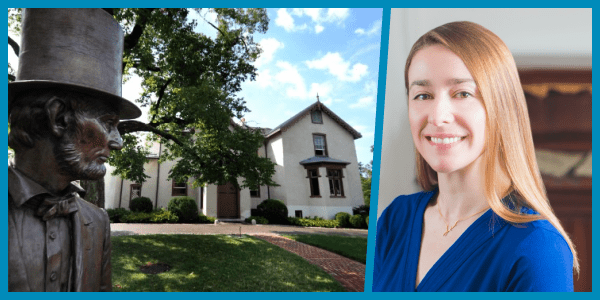
House museums are complex organizations but one of the most effective tools for navigating this complexity is the humble mission statement. In this 30-minute webinar, Erin Carlson Mast, president and CEO of President Lincoln’s Cottage in Washington, DC, discusses how she’s leveraged the values embedded in their mission statement to transform their community programs and daily operations to affect the lives of their visitors. She’ll be interviewed by Max A. van Balgooy (me!), co-editor of the recently published Reimagining Historic House Museums and president of Engaging Places.
The webinar is today (Thursday, April 23, 2020) at 3:00 – 3:30 pm Eastern (that’s 12 noon Pacific) and registration is free to AASLH Members and $30 Nonmembers. This webinar will be recorded and will be available in the AASLH Resource Center after the event has passed. Registrants of this event receive complimentary access to the recording in their Dashboard.
This webinar is part of the Historic House Call webinar series. Organized by the committee of the AASLH Historic House Affinity Community, Historic House Call webinars provide staff and volunteers working in historic house museums the chance to hear from a leading expert on a topic related to historic sites and ask questions about that topic. Historic House Calls are presented quarterly at no charge for AASLH members.

 I didn’t realize it at the time, but twenty years ago I began working with interpretive themes when I was refreshing the tours at the
I didn’t realize it at the time, but twenty years ago I began working with interpretive themes when I was refreshing the tours at the 



